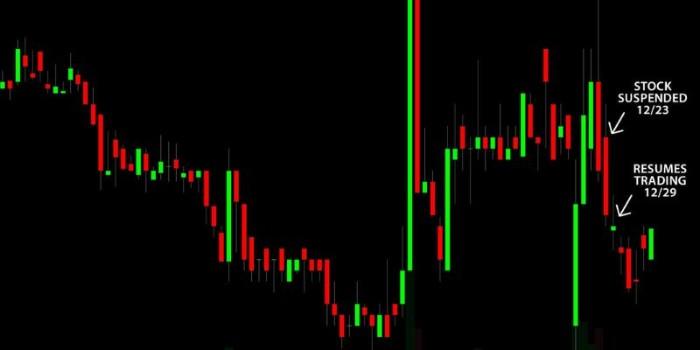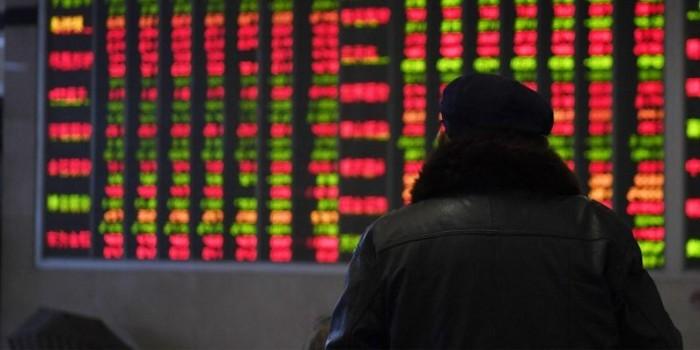What Is Suspended Trading?
Jul 29, 2023 By Rick Novak
Have you heard the term "suspended trading" but weren't sure what it meant? Never fear! Suspended trading is common in the stock market and temporarily stops security trading after significant events.
This suspension can help ensure fair and orderly markets by avoiding chaotic conditions resulting from excessive buying or selling activity following major news events.
In this blog post, we will discuss the definition of suspended trading, its purpose, how long suspensions typically last, who initiates them, and much more.
So read on for everything you need to know about suspended trading before it happens in your portfolio.
Definition and Examples of Suspended Trading
Suspended trading is a form of a temporary halt on the buying and selling of stocks, options, or other securities. It occurs when an exchange temporarily suspends trading in security for various reasons, such as regulatory concerns or extraordinary market volatility.
While suspended trading is usually only held for a short period, it can impact investors as prices rapidly change when trading is resumed.
An example of suspended trading would be the Securities and Exchange Commission (SEC) temporarily suspending security trading due to potential fraud or manipulation concerns.
By doing this, the SEC is taking measures to protect investors from any fraudulent activities that might have been occurring in the stock market. Suspended trading can also occur for other reasons, such as extraordinary market volatility or a potential corporate takeover.
Investors must be aware of suspended trading and how it may affect their investments. Suspended trading can have short-term impacts on stock prices, so investors need to stay informed about any suspensions that may occur.
Additionally, taking precautions by understanding the stock market and researching potential investments can help investors make informed decisions regarding their portfolios.
How Does Suspended Trading Work

Suspended trading occurs when a stock exchange or other marketplace temporarily halts the trading of a particular security. This usually happens due to some, as well as by outside governing authorities.
When suspended trading occurs, all pending orders for the security are automatically canceled. Also, no new orders can be placed during the suspension.
The primary reason why a stock might be temporarily suspended from trading is to protect investors and maintain fair and orderly markets. It could also act as a deterrent against market manipulation or other insider activities that create artificial pricing imbalances.
Sometimes, a suspension may be imposed on a stock because the company still needs to meet certain regulatory requirements, such as filing annual reports or providing financial information to the market.
When trading is suspended, investors can't buy or sell securities for the duration of the suspension. This could significantly impact their portfolios and create uncertainty about when they will be allowed to trade again.
For instance, if a stock is suspended due to an investigation or dispute over the company's financial statements, investors may only know when they can trade again once the situation has been resolved.
Investors must understand how suspended trading works and its implications on their portfolios to make informed decisions. It's also essential for investors to stay up-to-date on the latest market news to avoid any surprises related to suspended trading.
By familiarizing themselves with the rules and regulations associated with their investments and regularly monitoring the markets, investors can better prepare for the possibility of a suspension. This can help ensure that their portfolios remain secure during periods of suspended trading.
What Happens After a Trading Suspension

Once a trading suspension has been issued, the company must provide additional information to its investors. This includes filing updates with the SEC that explain the events or circumstances that led to the suspension and any corrective measures taken in response. The company may also be required to change its corporate governance and operating procedures.
A trading suspension can last anywhere from a few hours to several months, depending on the situation. During this time, the company may only be able to issue new shares or allow existing shareholders to buy or sell their shares once the SEC lifts the suspension.
In some cases, it may take years before trading resumes for a suspended company. Investors should consult a financial adviser or the SEC website during this period for further updates. In some cases, investors may be able to obtain compensation from the company if the suspension has harmed them.
Finally, a trading suspension will typically be announced to the public through news outlets and other media channels when a trading suspension is lifted. Investors should look for this information when trading on the company's securities.
It is important to remember that while a suspension of trading can hurt a company's stock, it does not necessarily mean that the firm will go out of business. Many companies experiencing suspensions can recover and continue operating successfully.
Investors should look for improvement in a suspended company's financials before investing. Investors should also be aware that trading suspensions can happen to any publicly traded company, so they should always exercise caution when selecting stocks for investment.
What It Means for Individual Investors
Suspended trading can profoundly affect individual investors, and understanding the implications of this action is essential. When a security is suspended, individual investors can only buy or sell that security once the suspension has been lifted.
This means that trading must be delayed until the regulatory issue causing the suspension has been resolved. Additionally, investors may be unable to access their funds until the matter is resolved.
Furthermore, if the security is suspended for a longer time, this could mean that investors will not be able to access additional information about the security or its issuer while it's suspended.
As such, investors should thoroughly research any security they plan on buying before doing so and keep an eye out for any potential suspensions that may affect their investments.
Suspended trading can also have an impact on market sentiment.
Suspended securities often face a steep decline in value as investors become wary of the security and its regulatory issues. While this price decline may be a buying opportunity for some investors, it can also cause significant losses if the suspension is prolonged or the security is ultimately delisted.
As such, all investors need to be aware of any pending suspensions and how they might impact their investments.
FAQs
How long is trading suspended?
Suspended trading is typically temporary, but the period can range from a few minutes to several days, depending on the securities market or exchange. The SEC can suspend trading for up to ten business days. However, it may extend beyond that duration if an investigation or legal proceeding requires it.
Why would a company suspend trading?
Companies may suspend trading to protect investors from fraud or when there is news of a material event, such as a merger or an acquisition. The SEC can also suspend trading if it believes that market manipulation or insider trading is occurring. Additionally, some companies may temporarily suspend their stock due to financial difficulties.
What happens to shares when they are suspended?
When a share is suspended, the stock can no longer be traded. During the period of suspension, any outstanding orders on the stock will remain open, but new orders cannot be entered into the market. Once trading resumes, investors will be able to trade shares as usual.
Conclusion
While suspended trading can take many forms due to different markets and exchanges, they all have one thing in common: a need for order and structure. Knowing what it is and how it works can help individual investors better navigate the world of securities exchanges—and make smarter decisions about their investments. Markets that suspend trading should be monitored carefully to protect investors' interests, as these rules and regulations ultimately shape how marketplaces work.








